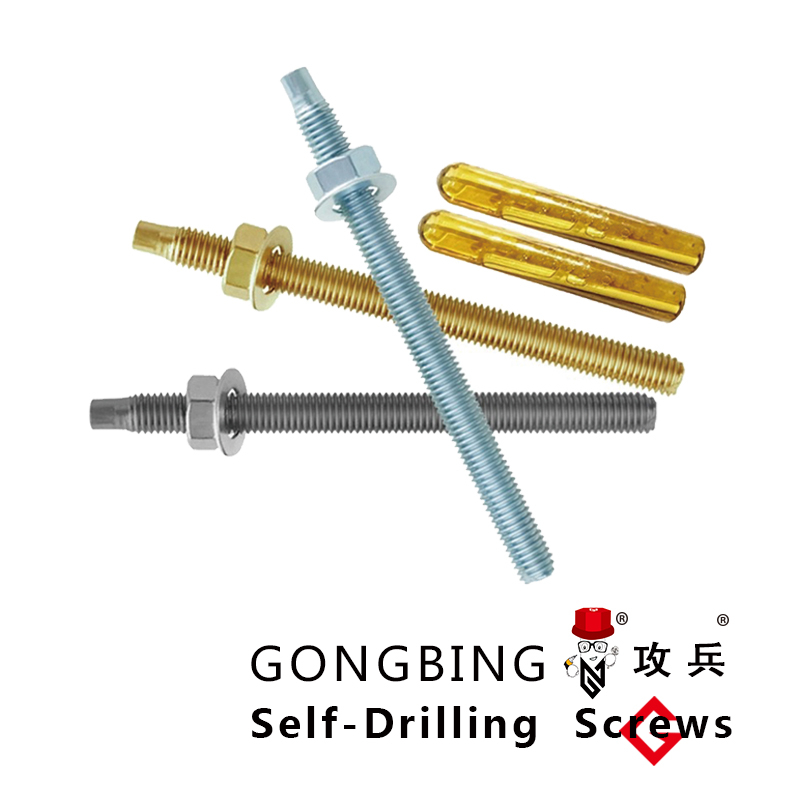chemical anchor fastener bolt
Understanding Chemical Anchor Fasteners A Comprehensive Overview
In the realm of construction and structural engineering, the importance of reliable fastening systems cannot be overstated. Among various types of fasteners, chemical anchor fasteners have gained prominence due to their unique characteristics and superior performance in certain applications. This article explores the concept of chemical anchor fasteners, their composition, types, advantages, installation processes, and applications.
What Are Chemical Anchor Fasteners?
Chemical anchor fasteners are a type of anchoring system that utilizes chemical adhesives to secure an object to a base material, typically concrete or masonry. Unlike traditional mechanical anchors that rely on physical interference to hold them in place, chemical anchors use a bonding agent—usually in the form of a resin or epoxy—to create a strong and durable connection between the components.
Composition of Chemical Anchors
Chemical anchor systems typically comprise two main components the base material and the chemical adhesive. The base material is often concrete, brick, or stone, while the chemical adhesive can vary based on the specific application and environmental conditions. Common types of chemical adhesives include epoxy, polyester, vinylester, and polyurethane. Each type has its own properties regarding strength, setting time, and resistance to chemicals and temperature, making it essential to select the appropriate adhesive for the task at hand.
Types of Chemical Anchors
Chemical anchors are available in various forms, primarily categorized based on their installation requirements and materials. The most common types include
1. Resin Capsules These consist of a prepackaged resin and hardener contained in a capsule that gets mixed when installed into the drilled hole. Resin capsules are favored for their ease of use and suitability for high-load applications.
2. Injectable Resins These come as separate components that are mixed and injected into the drilled hole. Injectable resins offer greater flexibility in adjusting the quantity of adhesive used, making them ideal for various applications.
3. Combining Systems In these systems, the resin is combined with a mechanical anchoring element, like a bolt or rebar, which provides additional holding power. This system is advantageous in dynamic or high-stress environments.
Advantages of Chemical Anchors
Chemical anchor fasteners present numerous benefits over conventional mechanical anchors
1. High Load Capacity Chemical anchors can typically handle higher loads compared to standard anchors. The bonding agent ensures a uniform distribution of forces across the surface.
2. Versatility They can be used in a variety of materials, including cracked and uncracked concrete, as well as in extreme weather conditions.
chemical anchor fastener bolt

4. Corrosion Resistance Most chemical adhesives are resistant to corrosion, making them suitable for environments exposed to moisture, chemicals, or saline conditions.
5. Flexibility in Design The ability to use different types of adhesive allows for custom solutions tailored to specific project requirements.
Installation Process
Installing chemical anchor fasteners requires careful preparation and adherence to manufacturer guidelines to ensure optimal performance. The general installation steps are as follows
1. Drilling A hole is drilled into the base material to the required diameter and depth.
2. Cleaning The hole must be thoroughly cleaned to remove dust, debris, and moisture, ensuring optimal bonding.
3. Mixing and Injection For injectable resins, the two components are mixed well before injecting them into the hole. For resin capsules, the capsule is placed into the hole and an anchor bolt is inserted, allowing the resin to flow and bond as it expands.
4. Insertion of the Anchor Once the adhesive is in place, the anchor rod or bolt is inserted according to the manufacturer's instructions.
5. Curing Allowing sufficient curing time is crucial for the adhesive to reach full strength, which is usually specified on the product label.
Applications
Chemical anchor fasteners are extensively used across various sectors, including construction, civil engineering, and maintenance. Common applications include
- Attaching structural elements such as beams, columns, and walls. - Securing fixtures like handrails, ladders, or support brackets. - Retrofitting and strengthening existing structures. - Installation in safety-critical applications like bridges and high-rise buildings.
In summary, chemical anchor fasteners represent an effective solution to many fastening challenges faced in construction and engineering. Their high load capacity, versatility, and durability make them a preferred choice for professionals striving for long-lasting and secure fixtures in their projects. As innovations continue in this field, the role of chemical anchors will only grow more significant, adapting to the evolving demands of modern construction.
-
Weatherproof Plastic Expansion Anchors for OutdoorNovasJun.06,2025
-
Sustainability in the Supply Chain: Eco-Friendly TEK Screws ProductionNovasJun.06,2025
-
Load-Bearing Capacity of External Insulation FixingsNovasJun.06,2025
-
Double Head Bolts: Enhancing Efficiency in Industrial MachineryNovasJun.06,2025
-
Corrosion Resistance in Chipboard Screws: Coatings for Wholesale DurabilityNovasJun.06,2025
-
Butterfly Toggle Bolts : Enhancing Structural ResilienceNovasJun.06,2025
